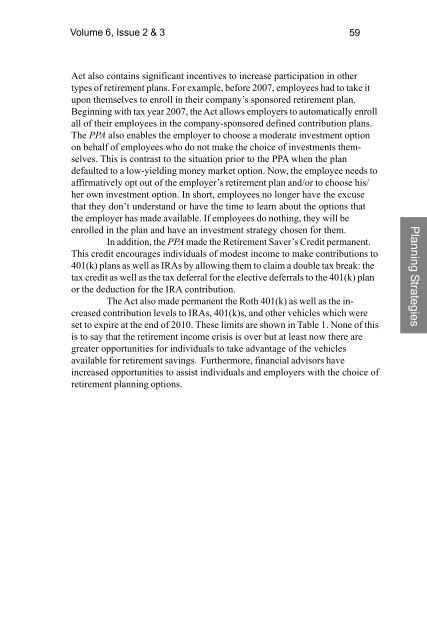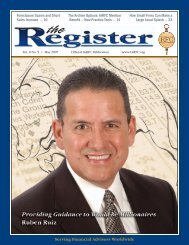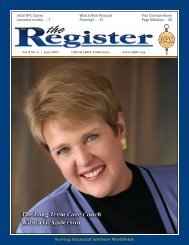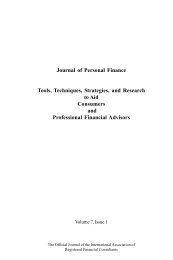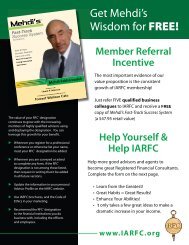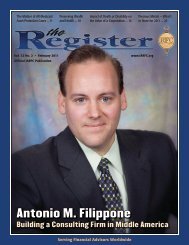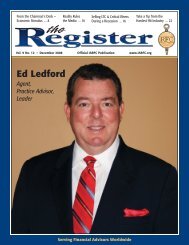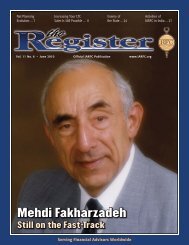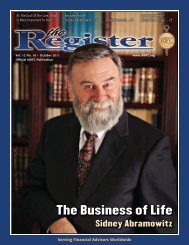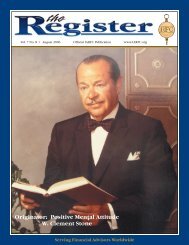3433-vol. 6 issue 2-3.pmd - iarfc
3433-vol. 6 issue 2-3.pmd - iarfc
3433-vol. 6 issue 2-3.pmd - iarfc
You also want an ePaper? Increase the reach of your titles
YUMPU automatically turns print PDFs into web optimized ePapers that Google loves.
Volume 6, Issue 2 & 3 59<br />
Act also contains significant incentives to increase participation in other<br />
types of retirement plans. For example, before 2007, employees had to take it<br />
upon themselves to enroll in their company’s sponsored retirement plan.<br />
Beginning with tax year 2007, the Act allows employers to automatically enroll<br />
all of their employees in the company-sponsored defined contribution plans.<br />
The PPA also enables the employer to choose a moderate investment option<br />
on behalf of employees who do not make the choice of investments themselves.<br />
This is contrast to the situation prior to the PPA when the plan<br />
defaulted to a low-yielding money market option. Now, the employee needs to<br />
affirmatively opt out of the employer’s retirement plan and/or to choose his/<br />
her own investment option. In short, employees no longer have the excuse<br />
that they don’t understand or have the time to learn about the options that<br />
the employer has made available. If employees do nothing, they will be<br />
enrolled in the plan and have an investment strategy chosen for them.<br />
In addition, the PPA made the Retirement Saver’s Credit permanent.<br />
This credit encourages individuals of modest income to make contributions to<br />
401(k) plans as well as IRAs by allowing them to claim a double tax break: the<br />
tax credit as well as the tax deferral for the elective deferrals to the 401(k) plan<br />
or the deduction for the IRA contribution.<br />
The Act also made permanent the Roth 401(k) as well as the increased<br />
contribution levels to IRAs, 401(k)s, and other vehicles which were<br />
set to expire at the end of 2010. These limits are shown in Table 1. None of this<br />
is to say that the retirement income crisis is over but at least now there are<br />
greater opportunities for individuals to take advantage of the vehicles<br />
available for retirement savings. Furthermore, financial advisors have<br />
increased opportunities to assist individuals and employers with the choice of<br />
retirement planning options.<br />
Planning Strategies


